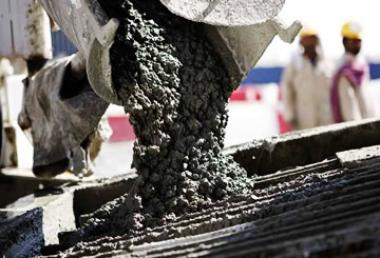Uncertain outlook for SA Cement Industry
 South African cement sales will disappoint next year, says multinational Lafarge, taking the opposite view to research group Frost and Sullivan.
South African cement sales will disappoint next year, says multinational Lafarge, taking the opposite view to research group Frost and Sullivan.
South African cement sales will disappoint next year, says multinational Lafarge, taking the opposite view to research group Frost and Sullivan, which suggests cement demand will boom in subSaharan Africa as infrastructure demand picks up.
“There is no doubt that prospects for growth in the South African market in the foreseeable future are neither as buoyant as we would like, nor quite as positive as we were forecasting this time last year,” Lafarge SA CEO Thierry Legrand says.
“We are still positive about the long-term prospects for the cement market in SA. That’s why we have invested in a R1.2bn project completed in 2009, bringing our overall cement capacity to 3.6-million tonnes a year,” he says.
According to Mr Legrand, since 2009, SA’s cement market has not grown at the rate Lafarge expected. “... we have not been able to fully utilise this capacity. Taking into account the prospects for growth and also new capacities coming into the market, we now foresee that we will have enough capacity in our main plant till 2020,” he says.
But Frost and Sullivan said in mid-September that it believed about $1-trillion would be spent on investment in cement in SA, Zambia and Zimbabwe between this year and 2018.
The South African government aims to spend R4-trillion on infrastructure over the next 15 years.
Frost and Sullivan said cement production in southern Africa stood at about 14.9-million tonnes last year and was expected to reach 18.1-million tonnes in 2018. New cement-manufacturing plants in SA, Zambia and Zimbabwe would boost cement production capacity.
Earlier in September, PPC CEO Ketso Gordhan acquired R3m worth of shares on the open market, saying this underlined his confidence in SA’s largest cement manufacturer.
Lafarge is one of SA’s major cement players, along with PPC, Afrisam and NPC. Largely Nigerian-owned Sephaku is set to start making cement at the end of this year.
Sephaku, with funding from Nigeria-based Dangote Cement, will, when it begins production later this year, become the first South African entrant in the local cement market since 1934.
Mr Legrand says Lafarge has 3.6-million tonnes of cement capacity, which “will be critically needed when the infrastructure programme is at full momentum”.
He says in SA, Lafarge’s cement volumes grew about 3.5% last year but the group expects no more than 2.5% growth this year.
SA’s gross domestic product (GDP) is expected to increase 3% next year and the cement market’s growth is estimated to lie between 3% and 4%, according to research by Lafarge.
Stanlib equity analyst Anashrin Pillay says he expects SA’s cement industry to “chug along a bit beyond the country’s GDP growth” this year.
“Well, the market would probably grow at between 4% and 5% without infrastructure spend, so it can move with the momentum of GDP growth,” he says.
Unrelenting rises in fuel and energy costs, which are continually squeezing margins, have not been fully recovered in previous price increases by Lafarge. Fuel costs increased 21% in 2011, 16% in 2012, and to date in 2013 by 9%, while electricity costs are increasing by more than 9%.
“Recent price increases did not fully recover input costs, while 2012’s average price increase was low. In order to compensate for the impact of the high input costs, Lafarge SA has concentrated on cost reduction and optimisation opportunities,” Mr Legrand says.
Despite increases in costs, Frost and Sullivan still foresees growth in cement production but says constructors might have to pay more for their cement.
“While on the one hand production is rising, the costs associated with production are also escalating as a result of soaring electricity and fuel prices,” the group says in its research report.
Another threat to domestic cement makers comes from importers: sales of imported cement make up about 5% of the total cement market in SA.
Last year, cement imported from Pakistan was criticised by people in the industry who claimed it was of low quality. Pakistan’s trade commission in SA, however, defended products made by Lucky Cement, saying they met all quality standards in SA and were also cheaper than established, locally manufactured equivalents.
The Pakistan trade commission has reiterated that there are no problems with cement imports from Pakistan. Qamar Zaman, commercial secretary at the Pakistan high commission in SA, expects Pakistan’s cement exports to SA to double each year.
“They are about half a million to 600,000 tonnes now. This should double to over a million tonnes in 2014. The cement imports are not only into SA. They are also going to other parts of the African continent,” he says.
One reason Lafarge may be correct to suggest cement production will dip next year is because of the general election in SA. Various construction group CEOs say that the trend is for construction to slow in the build-up to elections.
“I have seen it with the last four elections or so. Bureaucrats are deployed and construction and related business just does not happen,” Safic MD Eric Platt said this week when its head company, Accentuate, released its financial results for the year to June.













